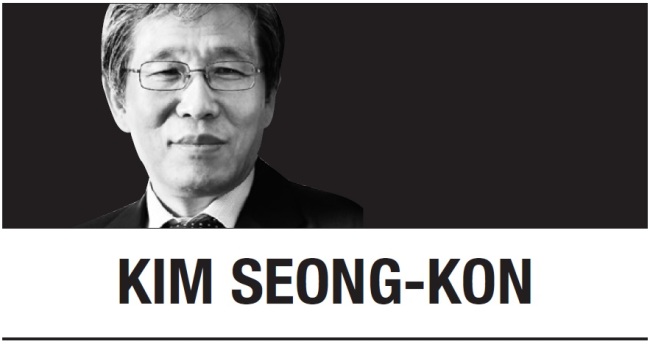
Recently, I was invited by the Ohio State University to give a talk. I flew to Columbus, Ohio where I was greeted by a group of eminent professors, including Mark Bender, Naomi Fukumori, Chan Park, Pilho Kim and Danielle Pyun, whose warm hospitality made my sojourn so comfortable. There, I was very much impressed with OSU students who listened to me attentively for an hour and fifteen minutes. Unlike Korean students, no one was texting or updating their Facebook accounts during my talk. They were enthusiastic, courteous and ready to learn.
The Ohio State University is one of the three largest state universities in the US and has a sprawling lawn called the Oval. Students sit or lie down there reading or chatting. Ohio State is also famous for its legendary football team, Buckeyes. It is only natural that the campus has a gigantic stadium called The Horseshoe that has the capacity of 104,944. The Ohio State University reminded me of Philip Roth’s National Book Award winning novella “Goodbye, Columbus.” In the novella, the female protagonist’s brother is from OSU. He enjoys listening to a record that has the lyrics “Goodbye, Columbus.”
“Goodbye, Columbus” depicts the protagonist’s disillusionment with his fellow Jewish compatriots who have presumably accomplished the American Dream by turning themselves into snobbish upper-middleclass people saturated with materialism. Neil Klugman, who works in the Newark Public Library and lives in a blue collar neighborhood, falls in love with Brenda Patimkin from Radcliff, who lives in the affluent suburban area.
Initially, Neil is attracted by the rich and free-spirited Brenda. Gradually, however, he is tired of her snobbish attitude and inconsiderate waywardness. Neil realizes that Brenda and her family have been successfully assimilated into American society at the cost of traditional Jewish values and morality. At the end of the novella, Neil is disillusioned with Brenda and breaks up with her. In that sense, “Goodbye, Columbus” means not only “Goodbye, Columbus, Ohio” but also “Goodbye, Christopher Columbus” and “Goodbye, America that we have been dreaming of”
Philip Roth, who sadly passed away last week, was a truly great American writer who beautifully rendered the problems of the second or third generation Jewish-Americans who assimilated into middleclass American society. In his eyes, during the process of assimilation, some Jewish-Americans lost their traditional values and became snobbish in a materialistic, affluent American way. Others obstinately subscribed to the orthodox Jewish faith, which oftentimes could be suffocating and stifling. Since Roth was critical about the two types of Jewish-Americans, he was criticized by the Jewish community in the US that called him a “self-hating Jew.”
In his collection of stories, “Goodbye, Columbus,” which contains five short stories and a novella, Roth delves into various issues Jewish-Americans encounter in American society. In “The Conversion of the Jew,” for example, a defiant 13-year-old Jewish-American boy challenges Rabbi Binder with unorthodox questions such as “How is it possible that the Virgin Mary gave birth to a baby without having sex?”
Upset by the impertinent question, both the rabbi and his mother slap Ozzi. Then, Ozzi runs to the rooftop of the synagogue and threatens to jump unless they bow on their knees in the Christian fashion and declare that they believe in Jesus. Then Ozzie asks them to never slap anyone who has a differing opinion about God. Finally, he jumps onto a net prepared by firemen. In “Defender of the Faith” and “Eli, the Fanatic,” Roth continues to explore in depth the moral and religious problems of the Jewish people in American society.
In another novel, “American Pastoral,” Roth delineates a successful Jewish-American businessman and ex-star athlete who has to helplessly witness his daughter be ruined by America’s social and political turmoil. Another novel, “I Married a Communist,” depicts the downfall of a man in the whirlpool of McCarthyism. In “Human Stain,” Roth presents a protagonist who seems to have accomplished the American Dream, and yet who is ruined by the whirlwind of the “political correctness” movement.
While waiting for my flight back to Washington at Columbus airport, I pondered the courage of Roth who boldly criticized his own people. The Jewish community in the US obviously wanted their celebrity writer to praise Jewish-Americans. But Roth failed them and courageously tackled and exposed the problems his people face.
I also pondered the American Dream that has lost its original freshness and purity lately. America’s greatness comes from its cultural and ethnic diversity. So does America’ strength. These days, however, America seems to be headed in the opposite direction, denouncing cultural and ethnic diversity as its source of strength. Watching so many people of diverse ethnic origins walking on the streets of America, I see the greatest nation on earth. But what if their dream is shattered like Roth’s protagonists due to misguided policies and socio-political turmoil?
Leaving Columbus, Ohio, I silently bid farewell, “Goodbye, Columbus, Goodbye, Philip Roth.”
Kim Seong-kon
Kim Seong-kon is a professor emeritus of English at Seoul National University and distinguished visiting professor at George Washington University. He can be reached at sukim@snu.ac.kr –Ed.








